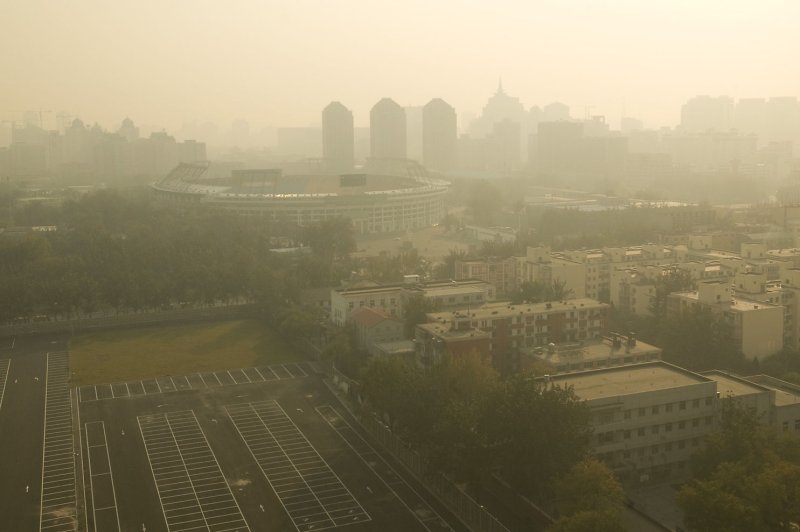Haze hangs over the city of Beijing. File photo by UPI Photo/Stephen Shaver |
License Photo
NEW HAVEN, Conn., Aug. 23 (UPI) -- As China's cities become more and more polluted, they're also warming. New research suggests haze plays a surprisingly large role in encouraging what's known as the urban heat island effect.
Haze is the collection of dust, smoke and other particulates that gives the urban air an oscillating blur. But not all particles have the same effects on weather and temperature.
The new study, published in the journal Nature Communications, shows smaller particles promote cooling by blocking out the sun, while larger particles encourage heating by amplifying radiation.
The latest research was carried out by a team of scientists at the Yale School of Forestry and Environmental Studies. The team was led by meteorologist Xuhui Lee.
Previously, the research team showed the urban heat island effect in the United States and Canada is largely dictated by vegetation and tree cover -- or lack thereof.
When Lee and colleagues tried to replicate their model in China, the numbers didn't play nicely. While trying to figure out why their data wasn't matching up, they identified a link between haze and a significant urban heat island effect.
Surprisingly, the cities most affected by haze-induced warming were smaller cities in China's semiarid midwestern and northwestern regions -- not the megacities along China's coast.
Scientists suggest the haze-induced warming may be fueled by coal plant exhaust and dust from unpaved roads.
Researchers say China needs to put a greater emphasis on air quality control.
"Cleaning up has a co-benefit," Lee said in a news release. "It helps improve human health, but it also helps to cool the local climate."
Lee says most current climate models fail to account for localized pollution conditions and instead focus on surface-level observations like vegetation. More work needs to be done to better predict the effects of aerosols on global warming.
"That's one of the frontiers in climate change prediction," Lee concluded. "There's a whole gap in our theory and methodology, so we tried to quantify that, not just to describe with empirical evidence. We tried to propose a framework to close this knowledge gap."















